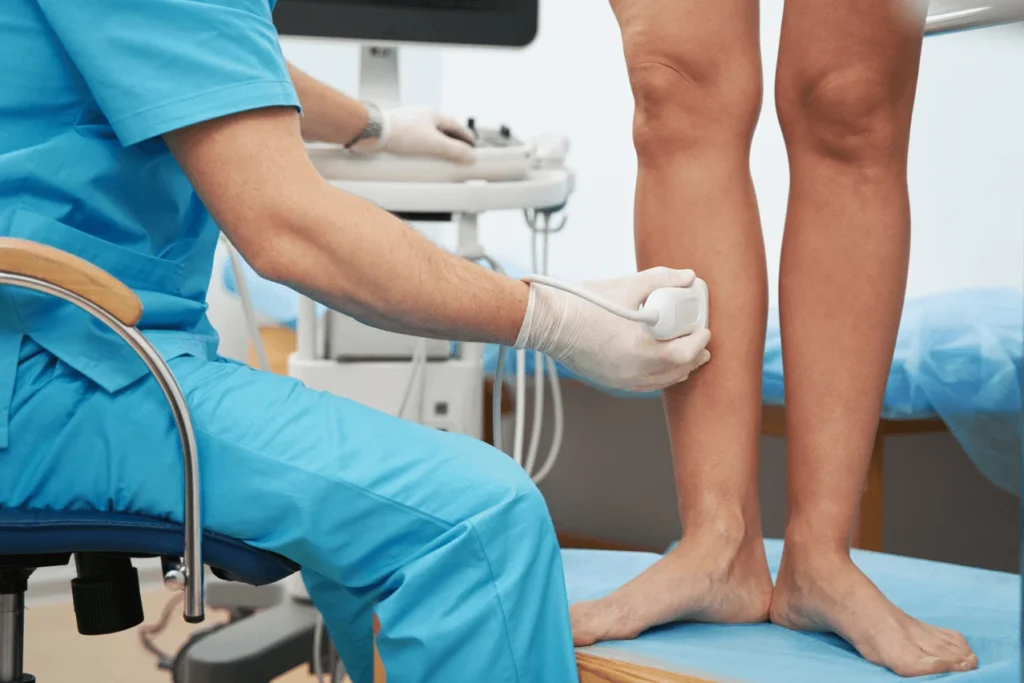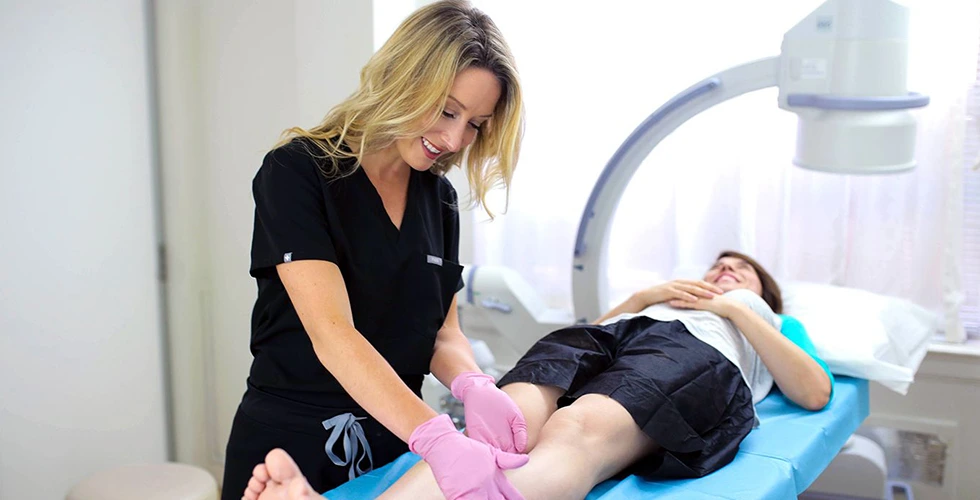If you’re suffering from varicose veins, you’re not alone. This common condition affects millions of people worldwide and can cause discomfort, pain, and other complications. But with the right treatment, it can be managed and treated. The good news is, several specialists can help you with varicose veins. In this article, we’ll answer frequently asked questions about varicose veins and the doctors who treat them. By the end of this, you’ll have a better understanding of who to see and what to expect.
What doctor treats varicose veins?
Varicose veins are best treated by a specialist who is an expert in diagnosing and treating vein disorders. These specialists are called phlebologists, or vein doctors. Phlebologists are medical doctors who have completed extensive training and have a thorough understanding of the anatomy, physiology, and treatment of veins. They have the necessary expertise to diagnose varicose veins and develop the most effective treatment plan for each individual patient.
When it comes to treating varicose veins, it’s important to see a board-certified phlebologist. Board certification indicates that a doctor has completed rigorous training and passed rigorous exams to demonstrate their expertise in their field. By seeing a board-certified phlebologist, you can be assured that you’re getting the best possible care.
Phlebologists are equipped with the latest techniques and technologies for diagnosing and treating varicose veins. They use non-invasive techniques, such as ultrasound, to accurately diagnose varicose veins and develop a treatment plan that is specific to your needs. They also use minimally invasive treatments, such as endovenous laser therapy (EVLT) and radiofrequency closure, to effectively treat varicose veins without surgery.
Maryland Vein Clinics is led by highly-skilled, board-certified vein doctors specializing in the latest and safest minimally invasive vein treatments, such as radiofrequency ablation and sclerotherapy. You can find our vein doctors just outside of Washington, DC in Silver Spring.

How to take care of veins?
Taking care of your veins is essential to minimize the risk of varicose veins and other vein disorders. Here are some simple steps you can take to keep your veins healthy:
- Exercise regularly: Regular physical activity helps improve circulation and strengthen the veins. Aim for at least 30 minutes of moderate exercise, such as walking or cycling, every day.
- Maintain a healthy weight: Being overweight or obese puts extra pressure on your veins, making it harder for them to pump blood back to your heart. Maintaining a healthy weight can reduce the risk of developing varicose veins.
- Elevate your legs: Elevating your legs above the level of your heart helps improve blood flow and reduce swelling. Try to elevate your legs for 15-20 minutes every day, especially after standing or sitting for long periods of time.
- Wear compression stockings: Compression stockings gently squeeze your legs, helping to improve blood flow and reduce swelling. They’re especially helpful for people with varicose veins.
- Avoid high heels: High heels can put extra pressure on your veins and make it harder for blood to flow. Opt for flat shoes or low-heeled shoes whenever possible.
- Avoid prolonged sitting or standing: Prolonged sitting or standing can cause blood to pool in your veins, leading to swelling and discomfort. Try to take breaks and move around every hour.
- Watch your diet: Eating a healthy diet that’s rich in fiber, fruits, and vegetables can help improve circulation and reduce the risk of developing varicose veins. Avoid foods that are high in salt and sugar, which can cause swelling and increase the risk of vein disorders.
Varicose veins vs. spider veins: what’s the difference?
Varicose veins and spider veins are both conditions that affect the veins in your legs, but they are different in several key ways.
Varicose veins are large, ropey, and swollen veins that can bulge out of the skin’s surface. They are often blue or dark purple in color and can cause aching, swelling, and discomfort. Varicose veins develop when the valves in the veins that control blood flow stop working properly, causing blood to pool in the veins and increasing pressure.
Spider veins, on the other hand, are much smaller and less noticeable. They are red, blue, or purple and look like spider webs or branches on the skin. Unlike varicose veins, spider veins don’t typically cause any discomfort or pain, and they don’t protrude outwards. They remain under the skin’s surface.
Another key difference between varicose veins and spider veins is their location. Varicose veins are deeper within the leg and are often associated with more serious vein disorders, while spider veins are closer to the surface of the skin.
What causes varicose veins?
Varicose veins are caused by a condition known as chronic venous insufficiency. This condition occurs when the veins in your legs are unable to efficiently pump blood back to your heart, causing blood to pool in the veins and increasing pressure. This happens when the valves within the veins malfunction, so they can’t prevent blood from flowing backward due to gravity. The continued accumulation of blood in leg veins leads to vascular dilation and varicose veins.
I have veins popping out on the legs: what should I do?
If you have veins that are noticeably popping out on your legs, it’s important to seek medical attention. Veins that are visible just under the skin can be a sign of a more serious vein disorder, such as varicose veins or chronic venous insufficiency.
Here’s what you should do if you have veins popping out on your legs:
- Schedule an appointment with a specialist: Look for a doctor who specializes in treating vein disorders, such as a phlebologist or vein doctor.
- Share your symptoms: During your appointment, be sure to describe any discomfort or pain you’re experiencing, as well as any changes in the appearance of your veins.
- Have a physical examination: Your doctor will likely perform a physical examination, during which they will look at the veins in your legs and assess the severity of your condition.
- Request diagnostic testing: Your doctor may request diagnostic testing, such as an ultrasound or MRI, to determine the underlying cause of your condition and determine the best course of treatment.
- Consider minimally invasive treatments: There are a variety of minimally invasive treatments available for varicose veins, including sclerotherapy, laser therapy, and endovenous laser therapy (EVLT). Your doctor will recommend the best treatment for you based on the severity of your condition and your individual needs.
Don’t ignore veins that are popping out on your legs. Early diagnosis and treatment can help to prevent more serious vein disorders and reduce the risk of complications. If you’re concerned about the appearance of your veins or are experiencing discomfort or pain, schedule an appointment with our board-certified vein doctors in Maryland as soon as possible.





